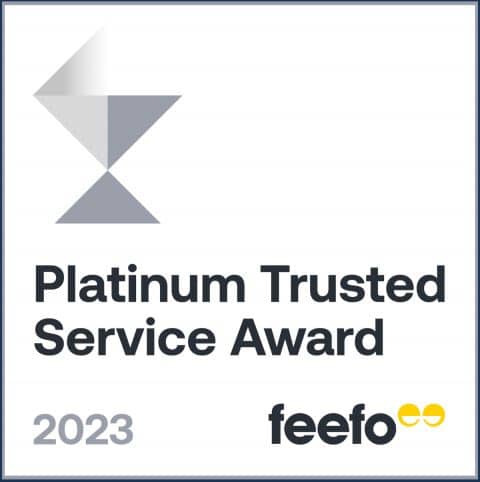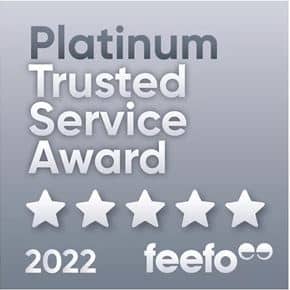For many students, owning a car is essential for balancing studies, work and social life. But how easy is it to get approved for a car loan when you’re still studying? You can get a car loan as a student, though there aren’t specific loans designed for students – you’ll need to apply for a standard car loan instead.
Securing approval can be tricky, however, especially if you're not in regular employment or have a limited credit history. Lenders tend to view students as higher-risk borrowers, which can result in stricter lending criteria. But don’t be discouraged! Even though it may be more challenging, a car loan is not out of reach.
So, how do car loans work? Here are some typical features that apply, whether you’re a student or not:
- Secured: car loans are typically secured, which means the vehicle is used as collateral and the lender can repossess the car if you default on the loan.
- Loan amount: car loans are available from $2,000 all the way up to $100,000, but the amount you can borrow depends on factors like the car's value, your income and your creditworthiness. As a student, you might be approved for lower loan amounts compared to more established borrowers.
- Interest rate: interest is an extra cost paid on top of the loan amount, expressed as an annual percentage rate (APR). Car loans can have either fixed or variable interest rates. Fixed rates remain the same throughout the loan term, while variable interest rates can fluctuate with market conditions.
- Fees: car loans come with various fees, such as application fees and monthly service fees. There might also be early repayment fees if you pay off the loan ahead of schedule.
- Comparison rate: the comparison rate is the combined amount of the interest rate and any associated fees, giving a more accurate picture of the loan’s cost.
- Repayment term: loan repayment terms typically range from 1 to 7 years. Repayments are usually made in monthly instalment, but weekly and fortnightly options may also be available with some lenders.
Why apply for a car loan with Savvy?
100% online
There’s no need for messy paperwork with us. When you apply, you’ll be able to submit and sign all your forms electronically.
4.9-star customer service
The satisfaction our customers feel is clear when you see our impressive 4.9-star rating for our service on Feefo.
Helping Aussies since 2010
We’ve been helping Australians just like you find their ideal car loan package and save on interest and fees for 15 years.
No impact on your credit score
Our consultants will conduct a soft credit check when assessing your application, so your score won’t be affected.
40+ lending partners
We’re partnered with over 40 car loan providers nationwide, giving you more high-quality options to consider.
Competitive interest rates
We scour our lending panel for the lowest rates and match you with the most affordable deal available for your profile.
How do I qualify for a student car loan?
When you apply for a car loan, you will need to meet certain eligibility requirements. Lenders will check:
- Age: you must be at least 18 years old to take out any loan product in Australia, whether you are a student or in full-time work.
- Residency: to qualify for a student car loan, you must meet lenders’ residential requirements. Most lenders require applicants to be permanent residents or citizens of Australia. Some lenders accept certain temporary visas but if you are an international student on a study visa such as the 500 Student or 407 Training visa, you are generally not eligible. However, some lenders, especially Australia’s big four banks (ANZ, Commbank, NAB and Westpac), are more willing to lend to people on different visas while others will judge eligibility on a case-by-case basis. As such, it may be worth contacting individual lenders to see if you could be eligible.
- Income: lenders have income requirements for all applicants – and this might be the most challenging requirement for students to fulfil. However, in many cases the threshold is not high and there are loans available even for low-income earners. As such, you could get approved as a casual or part-time worker, especially if your earnings are regular and consistent, but keep in mind that lenders do not accept payments such as Austudy and Youth Allowance as income.
- Credit score: lenders will check your credit score to assess your creditworthiness. A higher score can boost your chances of approval and potentially qualify you for lower interest rates. On the other hand, a poor or limited credit history may result in fewer loan options.
What car can I buy with a student car loan?
You can buy any car you like as a student – as long as you can afford it. If you are looking to buy a vehicle with a student car loan, it’s important to factor in restrictions imposed by the lender as well as your own budget constraints. While you may not be able to get a car with all the bells and whistles, here are some tips for finding one that suits both your needs and finances:
- Buy a smaller car: you might like the idea of a big SUV, but smaller models such as the Kia Picanto and Hyundai i30 hatchback can be significantly cheaper than their larger cousins.
- Choose a used vehicle: used cars offer good value and reliability at a lower cost compared to new cars, though it’s important to inspect its condition prior to purchase.
- Use a private seller: if you are comfortable buying from a private seller, you can often get a better deal on your set of wheels than buying from a dealership – but it’s important to do your due diligence before handing over the cash.
- Be aware of lender restrictions: lenders often have restrictions on the age and mileage of the vehicle you can finance, generally preferring cars that are less than 10 years old and have lower mileage.
WHAT OUR CUSTOMERS SAY ABOUT THEIR FINANCE EXPERIENCE



Savvy is rated 4.9 for customer satisfaction by 6324 customers.
Steps to get a car loan as a student
-
Find out how much you can afford
You can use our car loan repayment calculator to find what will your repayments be. Figuring out how much you can afford easily can save you a lot of trouble in the future. Keep in mind that you are likely to pay more as a student as the lowest interest rates are reserved for those with the best credit scores.
-
Compare finance
Loans are available from a variety of providers such as banks, credit unions, car dealerships and online lenders. Each will have its own lending criteria, so it’s important to compare the rates and repayments between them to find the best deal for you. It can be intimidating to do this on your own, especially if you’ve never bought a car before. If you need help, our friendly team at Savvy can help guide you through the process.
-
Apply for your loan
Once you've matched with a lender, you will need to provide supporting documents for your application such as proof of income, proof of address and identification. Your lender will review these to verify your financial situation and assess your eligibility for the loan before making a decision. If approved, they will provide you with the loan terms. Be sure to read these carefully before accepting the offer to ensure it aligns with your financial needs and capabilities.
-
Pick up your car
Once you have been approved, you can buy your car. Complete all necessary paperwork with the seller and ensure the loan funds and registration are transferred appropriately. Once everything is in order, you can pick up your car and drive away!
Do I have any driving restrictions as a young driver?
Several laws apply across the board to drivers with learner and provisional licences in Australia:
- You must not have any alcohol in your system while operating a vehicle
- You must display an L-plate or P-plate sign on your car where required
- You must not use your mobile phone while operating a vehicle (although hands-free usage may be allowed in some cases)
However, rules also vary by state and territory. Find out all about the restrictions where you live below.
If you're a student who has obtained their full license, then no restrictions pertain to you.
Australian Capital Territory
L-platers
- Speed limit: up to the posted speed limit
- Towing: no trailer towing permitted beyond a Gross Vehicle Mass (GVM) of 750kg
- Mobile phone usage: no usage permitted
- Restricted vehicles: no vehicle restrictions
P-platers
- Speed limit: up to the posted speed limit
- Passenger limit: while on P1 licence, no more than one passenger between 11:00pm and 5:00am from 16 to 22 years old (unless for employment or education purposes, with family members not included)
- Towing: no trailer towing permitted beyond a Gross Vehicle Mass (GVM) of 750kg
- Mobile phone usage: no usage permitted
- Restricted vehicles: no vehicle restrictions
New South Wales
L-platers
- Speed limit: up to 90km/h
- Towing: no towing permitted
- Mobile phone usage: no usage permitted
- Restricted vehicles: no vehicle restrictions
P-platers
- Speed limit: up to 90km/h (P1) or 100km/h (P2)
- Passenger limit: while on P1 licence and under 25, no more than one passenger between 11:00pm and 5:00am under 21 years old (unless for employment or education purposes)
- Towing: no towing permitted beyond a GVM of 250kg (P1)
- Mobile phone usage: no usage permitted
- Restricted vehicles: no vehicles with power to tare mass ratios of over 130kW per tonne, a modified engine requiring engineer approval or other high-performance vehicles listed in the restricted vehicle database
Northern Territory
L-platers
- Speed limit: up to 80km/h
- Towing: permitted
- Mobile phone usage: no usage permitted
- Restricted vehicles: vehicles with a visual display unit (VDU) or television visible to you or other drivers on the road
P-platers
- Speed limit: up to 100km/h
- Passenger limit: no passenger limit
- Towing: permitted
- Mobile phone usage: no usage permitted
- Restricted vehicles: vehicles with a visual display unit (VDU) or television visible to you or other drivers on the road
Queensland
L-platers
- Speed limit: up to the posted speed limit
- Towing: permitted
- Mobile phone usage: no usage permitted
- Restricted vehicles: no vehicle restrictions
P-platers
- Speed limit: up to the posted speed limit
- Passenger limit: while on P1 licence and under 25, no more than one passenger between 11:00pm and 5:00am under 21 years old (excluding immediate family members)
- Towing: permitted
- Mobile phone usage: hands-free functions, wireless headsets and mobile handsets on loudspeaker are permitted for P2 licence holders and P1 licence holders aged 25 or over
- Restricted vehicles: vehicles deemed high-powered by the Queensland Government
South Australia
L-platers
- Speed limit: up to 100km/h
- Towing: trailers, caravans, boats and horse floats can be towed
- Mobile phone usage: no usage permitted
- Restricted vehicles: no vehicle restrictions
P-platers
- Speed limit: up to 100km/h
- Passenger limit: while on P1 licence and under 25, no more than one passenger between 16 and 20 years old (excluding immediate family members and unless a qualified supervising driver is next to you)
- Towing: trailers, caravans, boats and horse floats can be towed
- Mobile phone usage: making or receiving a phone call is permitted for P2 licence holders only, provided the phone is secured in a mounting device, accessed remotely (such as via Bluetooth) or with a wired or wireless headset
- Restricted time: while on P1 licence and under 25, you mustn’t drive between the hours of 12:00am and 5:00am
- Restricted vehicles: vehicles deemed high-powered by the South Australian Government (drivers under 25 years of age only)
Tasmania
L-platers
- Speed limit: up to 90km/h
- Towing: no towing permitted
- Mobile phone usage: no usage permitted
- Restricted vehicles: no vehicle restrictions
P-platers
- Speed limit: up to 100km/h (P1) or the posted speed limit (P2)
- Passenger limit: while on P1 licence and under 25, no more than one passenger between 16 and 21 years old (excluding immediate family and a spouse or partner you live with and other exemptions)
- Towing: permitted
- Mobile phone usage: hands-free or speaker mode (P2 only)
- Restricted vehicles: no vehicle restrictions
Victoria
L-platers
- Speed limit: up to 90km/h
- Towing: no towing permitted
- Mobile phone usage: phones or tablets in an appropriate mounted device can be used for navigation and audio (provided it’s set up beforehand), as well as play audio via a wearable device such as a smartwatch or smartglasses
- Restricted vehicles: no vehicle restrictions
P-platers
- Speed limit: up to 100km/h (P1) or the posted speed limit (P2)
- Passenger limit: while on P1 licence, no more than one passenger between 16 and 22 years old (excluding spouses, domestic partners, siblings and step-siblings and other exemptions)
- Towing: towing not permitted for P1 licence holders unless you’re with a fully licenced driver or your towing is for employment or for agricultural purposes
- Mobile phone usage: phones or tablets in an appropriate mounted device can be used for navigation and audio (provided it’s set up beforehand), as well as play audio via a wearable device such as a smartwatch or smartglasses
- Restricted vehicles: no vehicles with power to tare mass ratios of over 130kW per tonne, a modified engine to increase performance or another probationary prohibited vehicle listed in the probationary vehicles database
Western Australia
L-platers
- Speed limit: up to 100km/h
- Towing: permitted
- Mobile phone usage: calls can be made or answered if your phone is mounted or can be used without touching it
- Restricted vehicles: no vehicle restrictions
P-platers
- Speed limit: up to the posted speed limit
- Passenger limit: no passenger limit
- Towing: permitted
- Mobile phone usage: calls can be made or answered if your phone is mounted or can be used without touching it
- Restricted time: you mustn’t drive between the hours of 12:00am and 5:00am during the first six months of holding your provisional licence (travelling to and from school or to, from and for your employment by the shortest practicable route is permitted)
- Restricted vehicles: no vehicle restrictions
Tips for getting a student car loan
-
Put down a deposit for the car
Paying for part of the car up front will give you a better chance to get a car loan. It proves to the lender that you are good at managing your funds and also lowers your repayments.
-
Consider a guarantor
Adding a guarantor or a co-applicant with a stable income to your loan, such as a parent, reduces the lender's risk and can improve your chances of getting approved for a car loan.
-
Keep your income stable
Lender prefers a stable income than variable income. This means a regular part-time job might benefit you more than a casual job with unstable working hours and income.
-
Build credit
A strong credit history can improve your chances of getting a car loan. Focus on making payments on time, using credit responsibly and avoiding applying for multiple credit accounts, as well as regularly monitoring your credit report for errors.
-
Buy a cheaper car
Opting for a less expensive car can make it easier to secure a loan. A lower-priced vehicle reduces the amount you need to borrow and can fit better within your budget, making the loan repayments more manageable.

